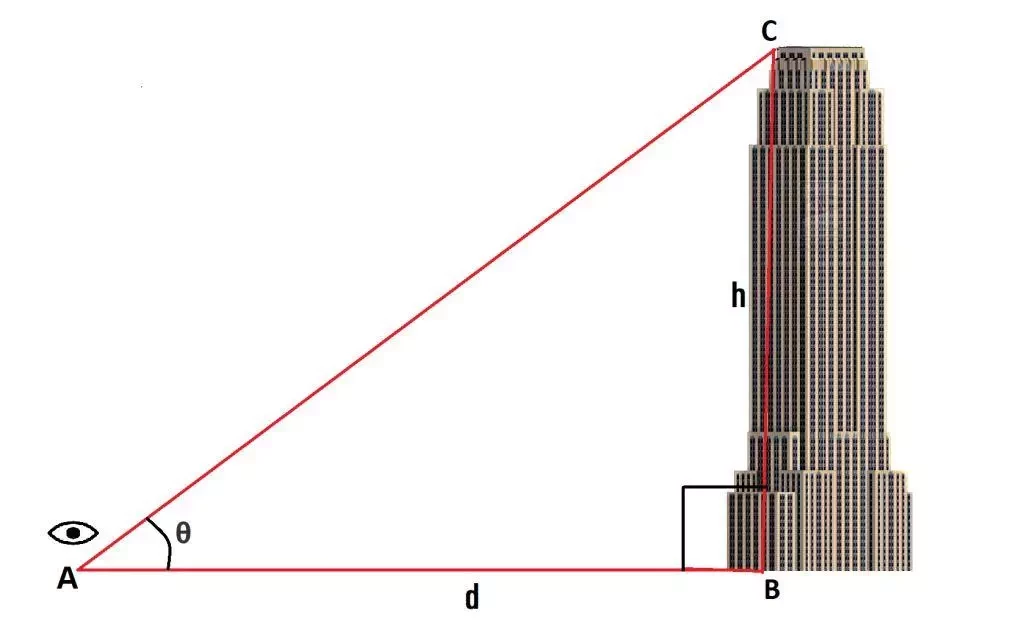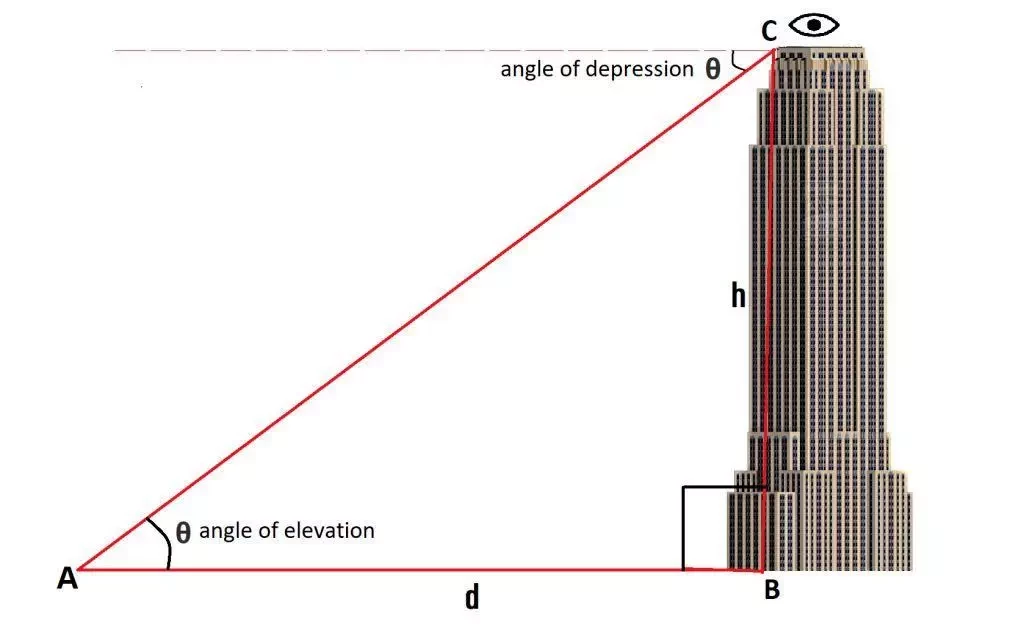Introduction
One of the practical applications of trigonometry is calculation of height of object and distance of an object from a point. For this we consider trigonometric concept in right angled triangle as illustrated below:-

• 'h' is the height of the building or an object.
• 'd' is the distance between the building/object and the eye of the observer (from the point where the building/ object is seen).
• 'θ' is the angle of elevation of the building/ object from the horizontal line.
Note: If any two of the above values are known, we easily can calculate the third value, with the help of trigonometric ratios (usually tanθ = h/d).
Fact: In the figure, it is important to note that the height (h) of the building/ object is calculated from the eyes of the observer and the right triangle is formed according to the point from where the object is seen (point A). The actual height of the building is h + the height of the viewer’s eye from the base. Since questions are so framed that height of the viewer is considered negligible as compared to the building/ object we directly calculate height from the eyesight of the viewer for calculating the height of building/ object.
♦ How Questions are framed on height & distance?
Questions from height and distance are very easy and can be easily solved with basic knowledge of trigonometric ratios and the Pythagoras theorem. Since, it is a practical application of trigonometry questions can be formed on any realistic things like for calculating the height of an object, distance of an object from a point, length of the shadow, length of thread in case of a kite, distance of any object in sea/ river from a point etc.
♦ How to solve Questions on height & distance?
1) For solving questions of height & distance we should immediately draw a diagram of the problem in form of a right-angled triangle.
2) Mark all the given values (height, distance, angle etc.) in the diagram.
3) Identify the sides/ angles asked in the question in the drawn diagram.
• If the diagram is drawn and marked correctly 75 % of the question is solved. For the rest, 25% use Pythagoras theorem and basic trigonometric ratios as per requirement.
Important Terms
We have already discussed height, distance and angle of elevation above. In many questions, the term angle of depression is used, as the name suggests the angle formed when some object is seen from a certain height the angle of depression is formed. In the above figure if the viewer is at the top of the building, then in question a term usually angle of depression is referred to. Let's see it with the diagram:-

The angle of elevation is equal to the angle of depression by the concept of parallel lines (alternate interior angles are equal). Whenever in question angle depression is given and in the drawn diagram we require angle of elevation for solving the question, we should use concept angle of elevation = angle of depression.
-If you are confused between the angle of elevation & the angle of depression, don't worry read the examples discussed in the course, you will understand the concept easily.
Full Syllabus in 1 Video [Contains Everything basic to advance]